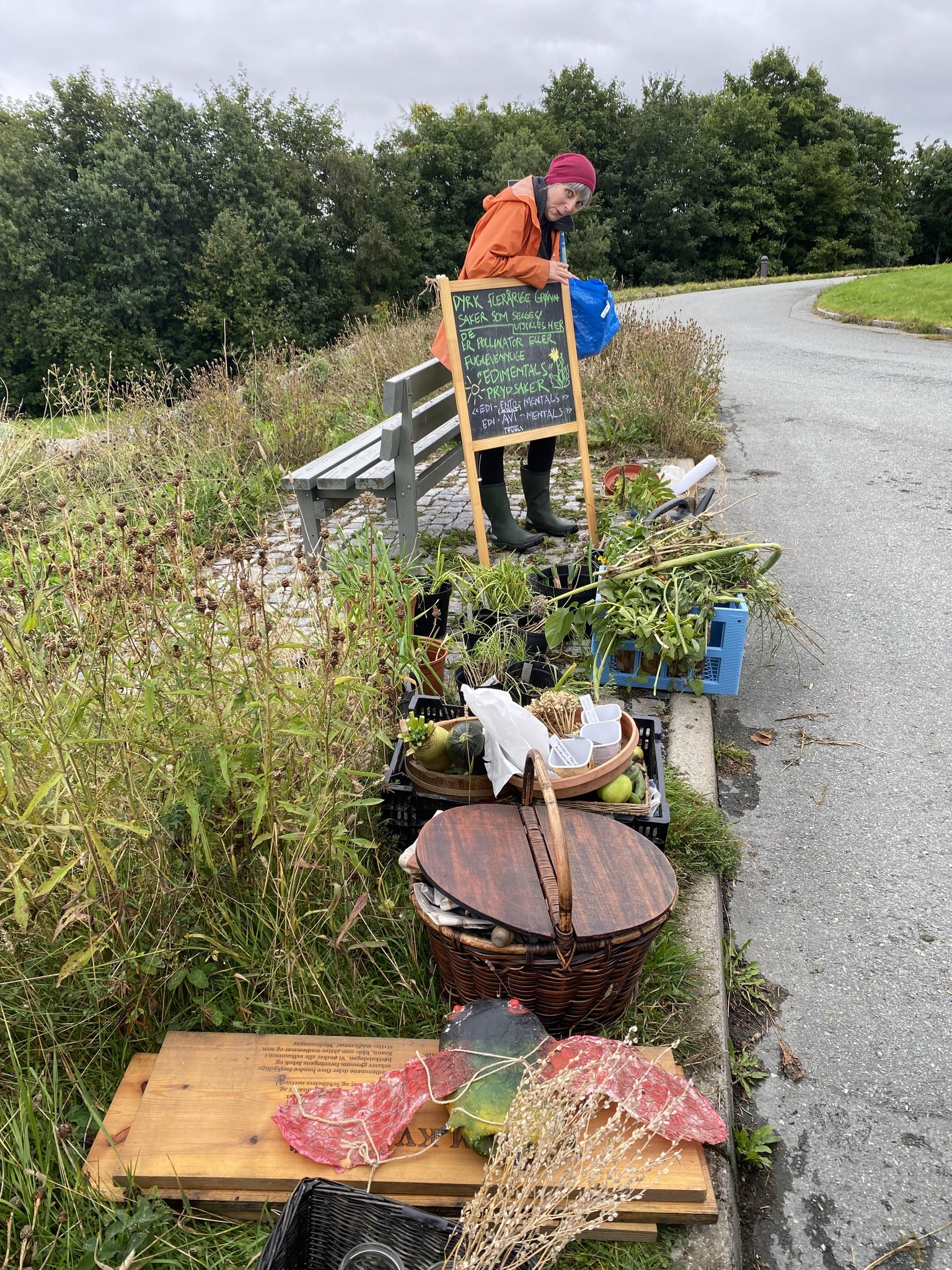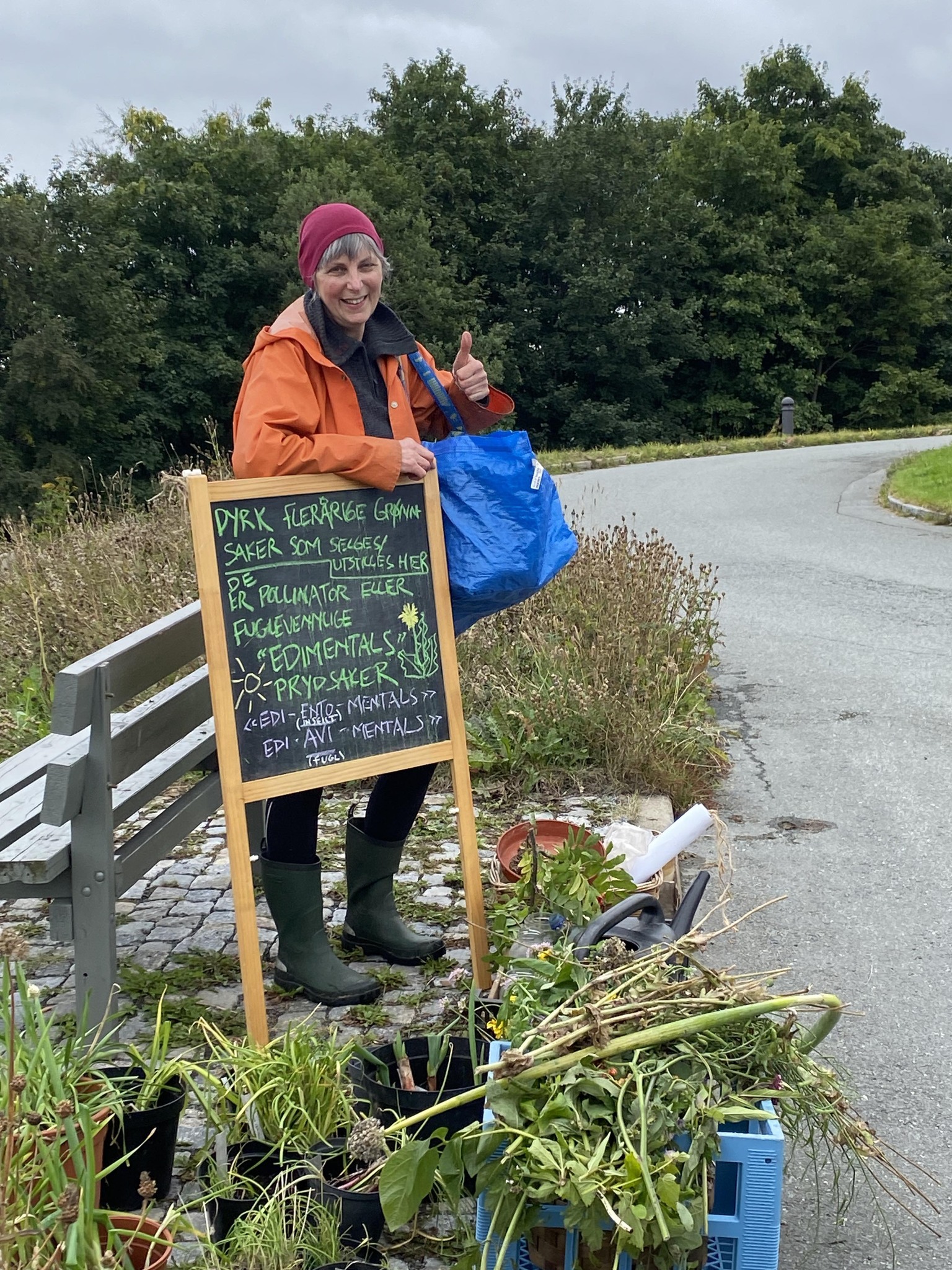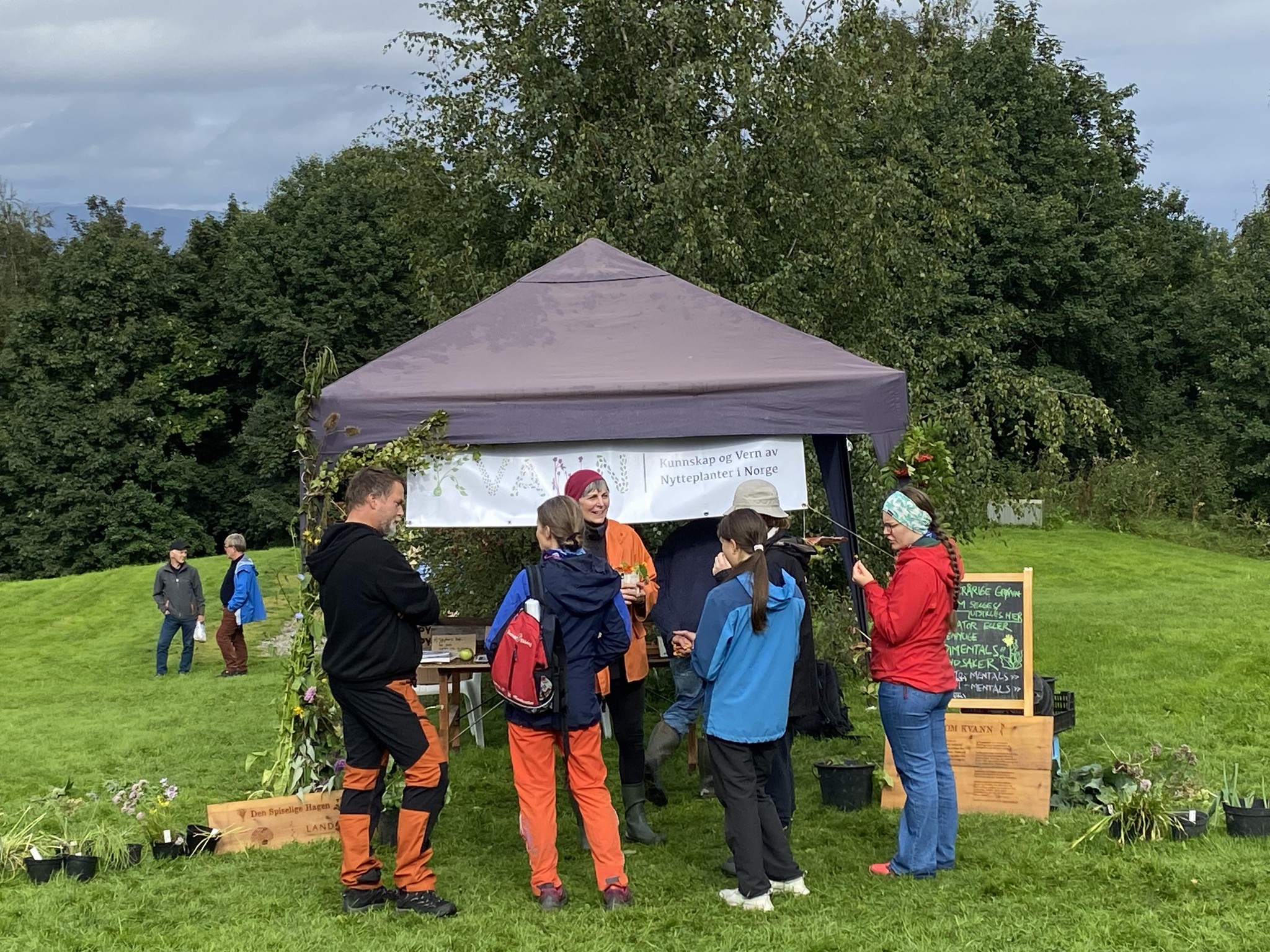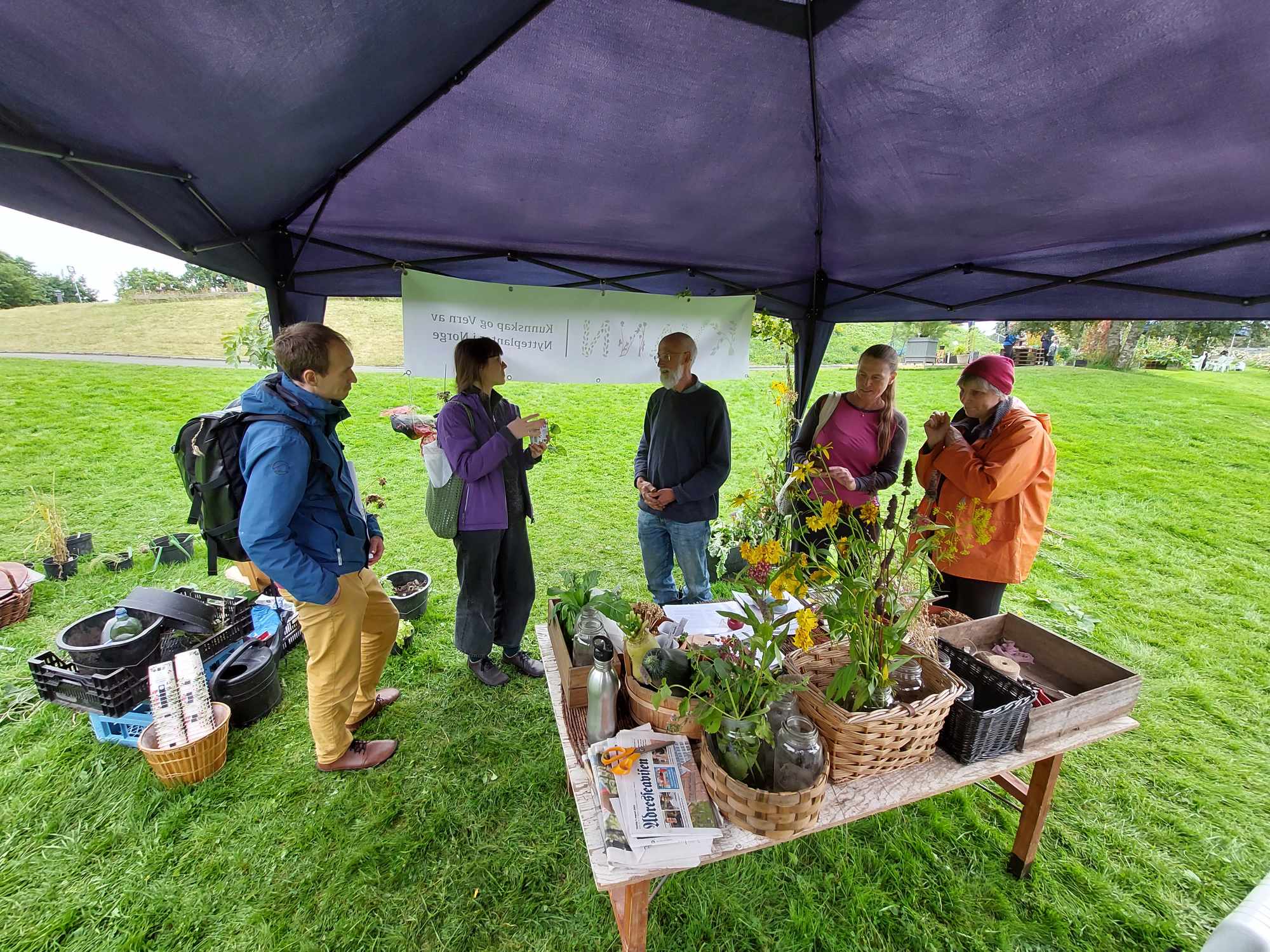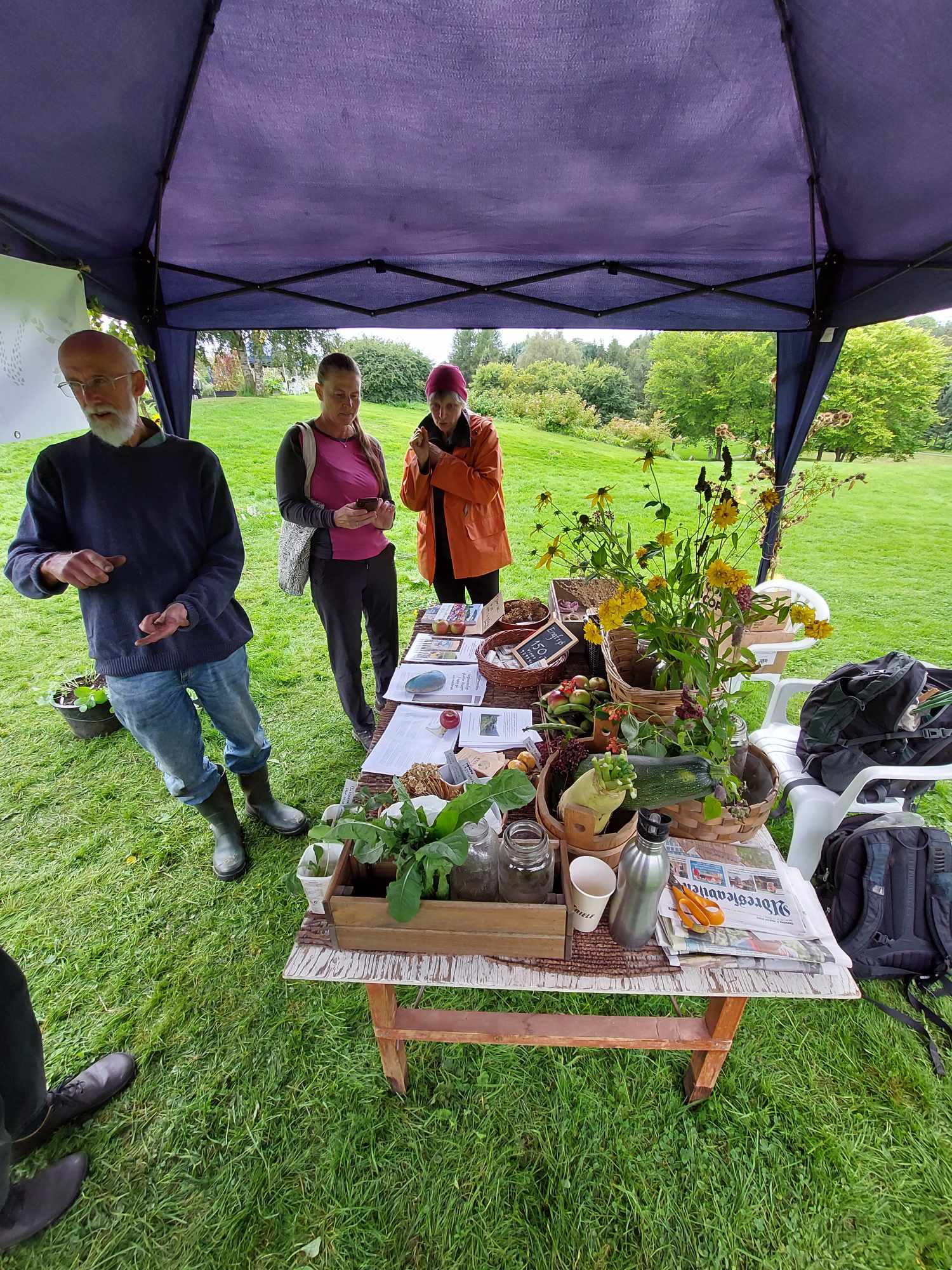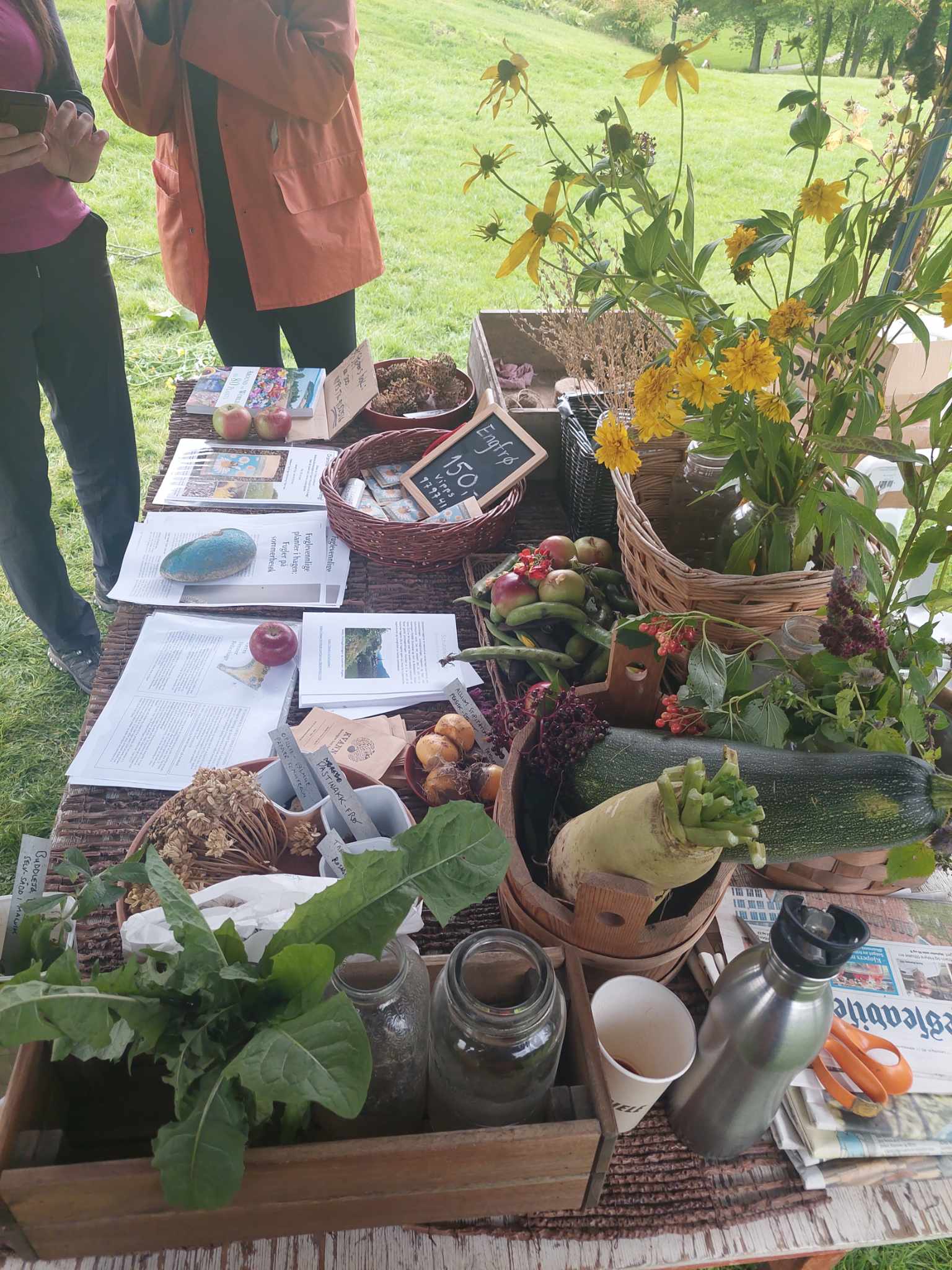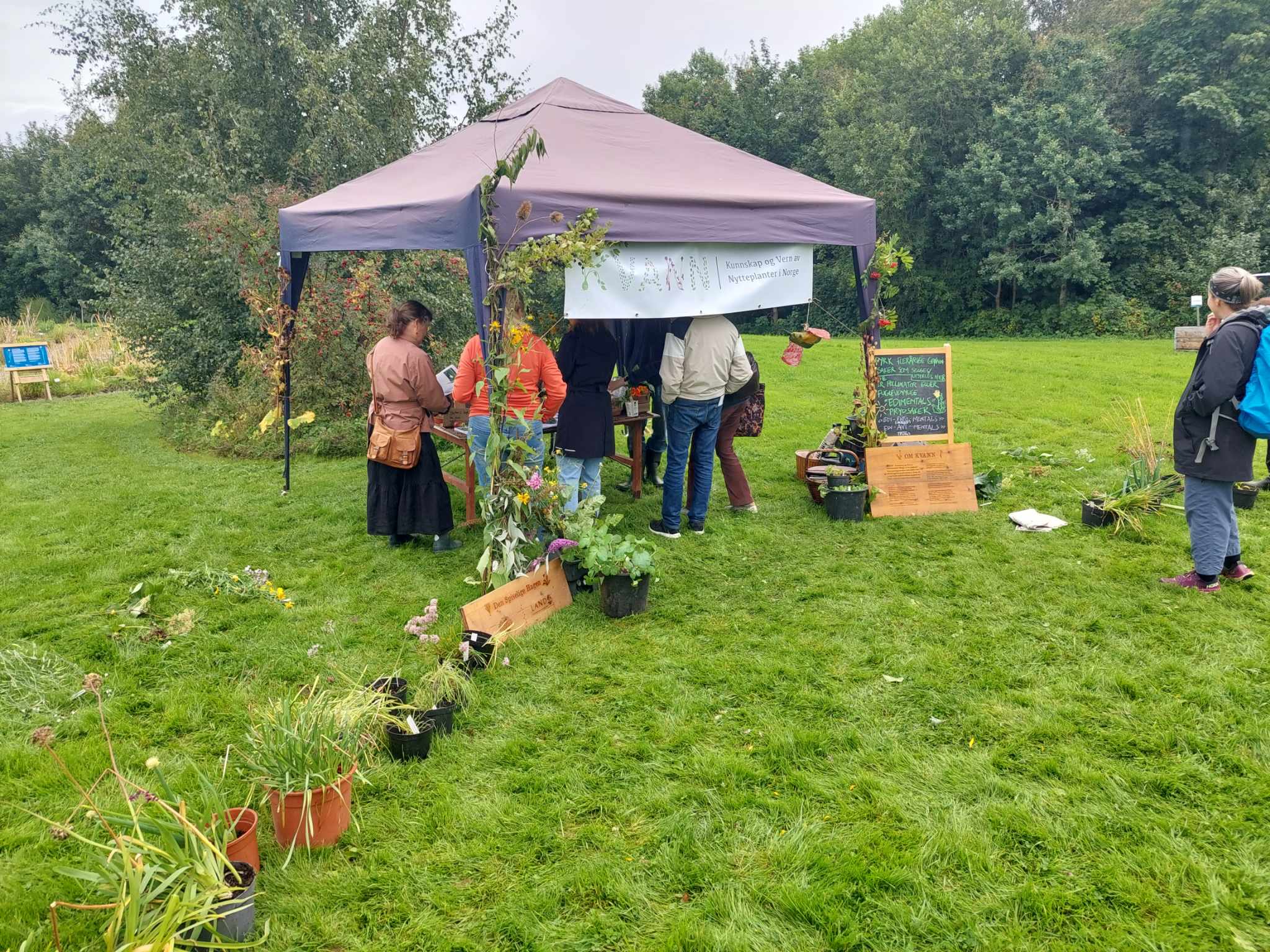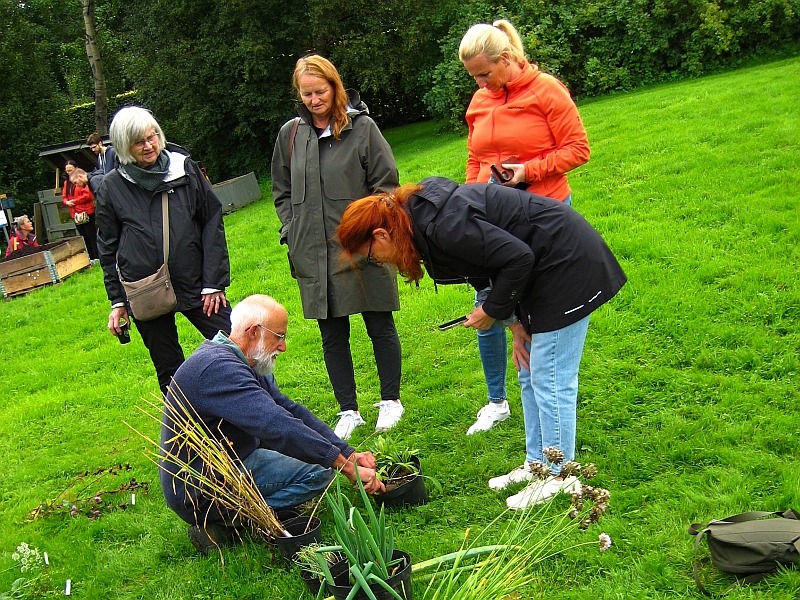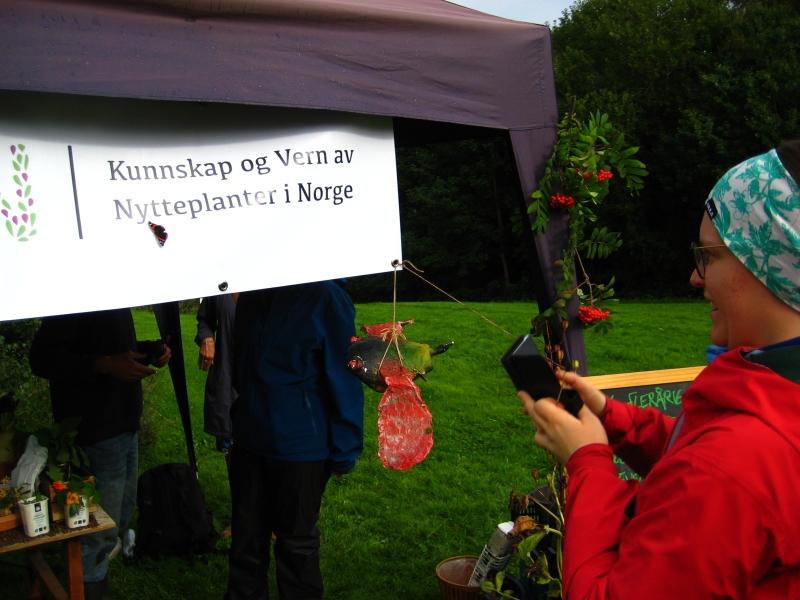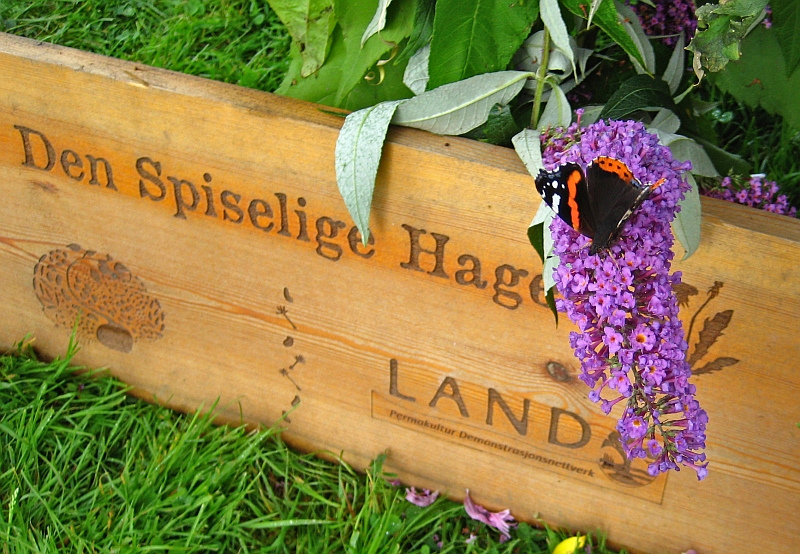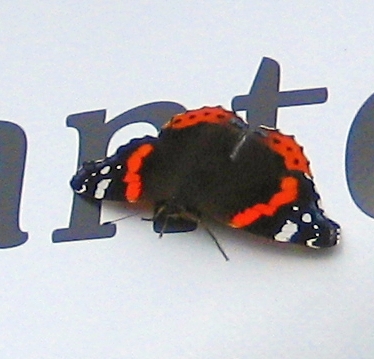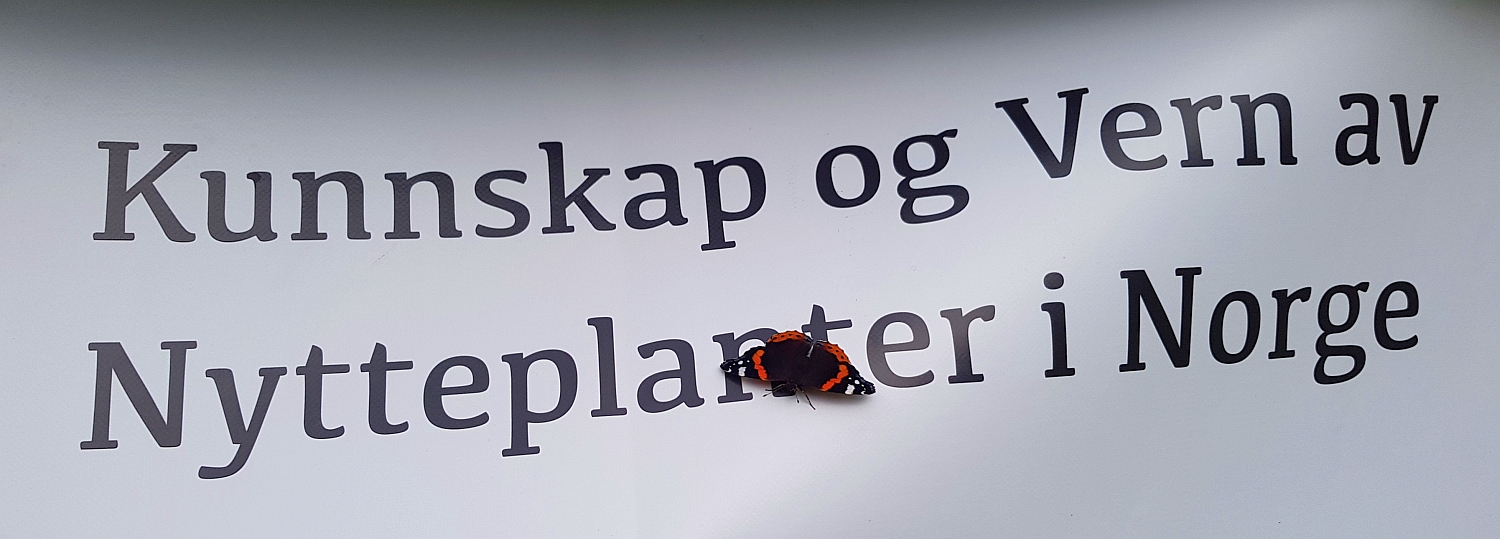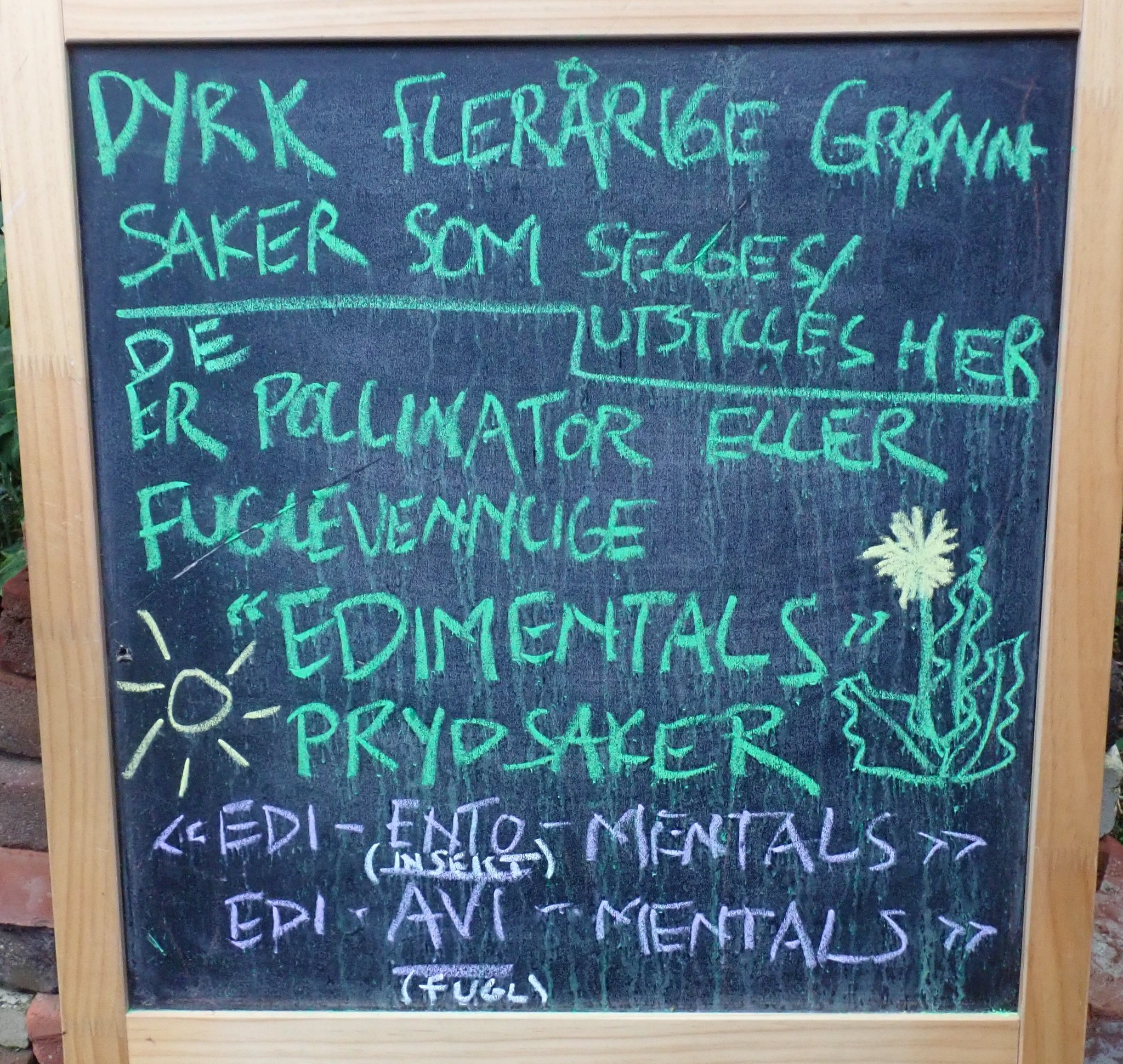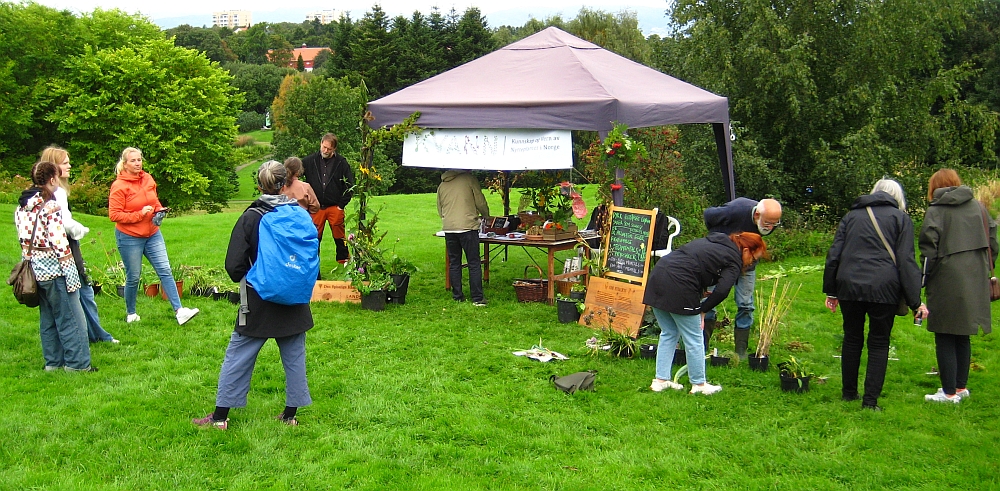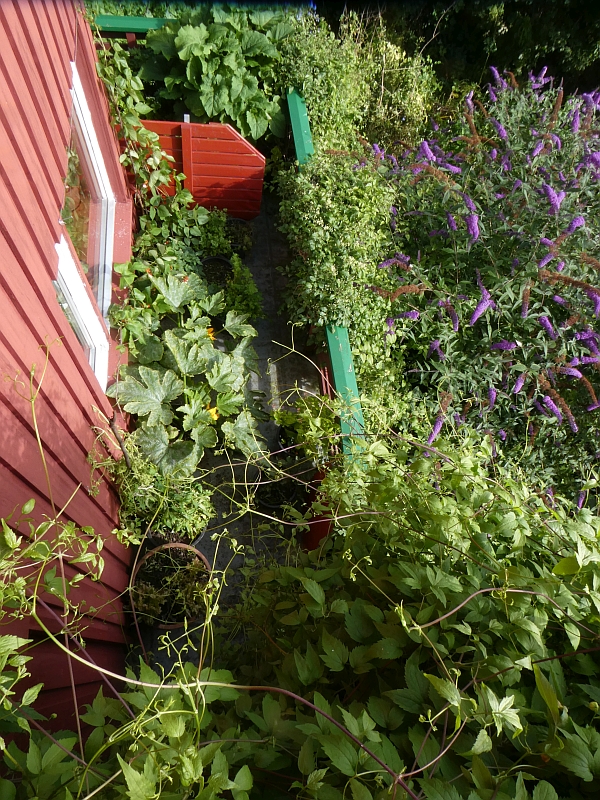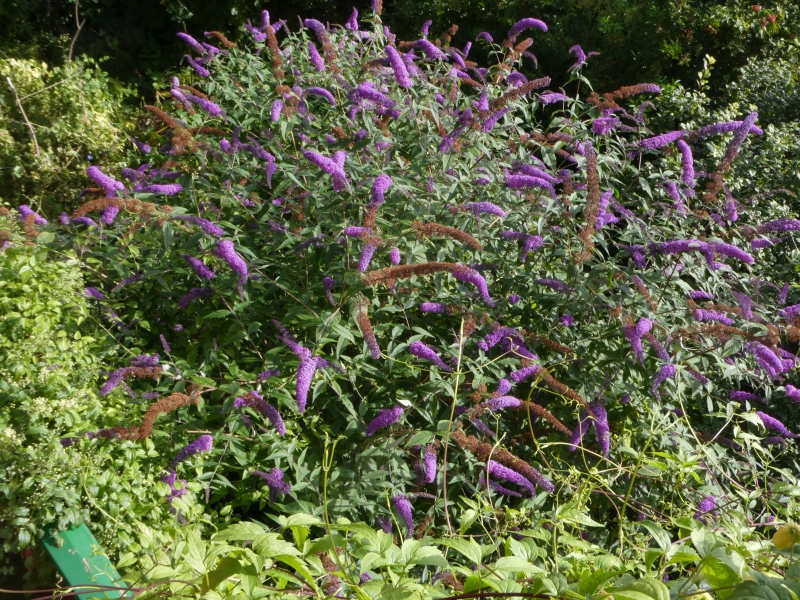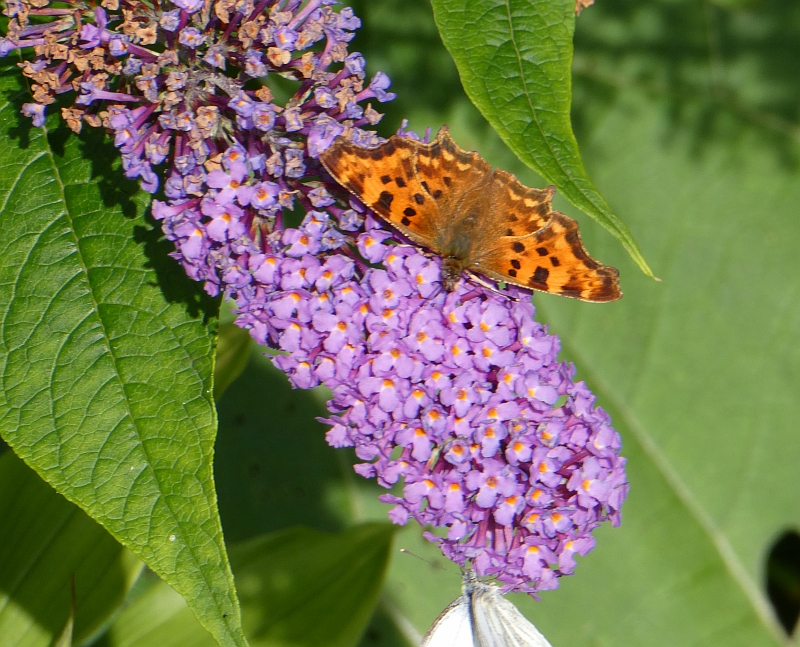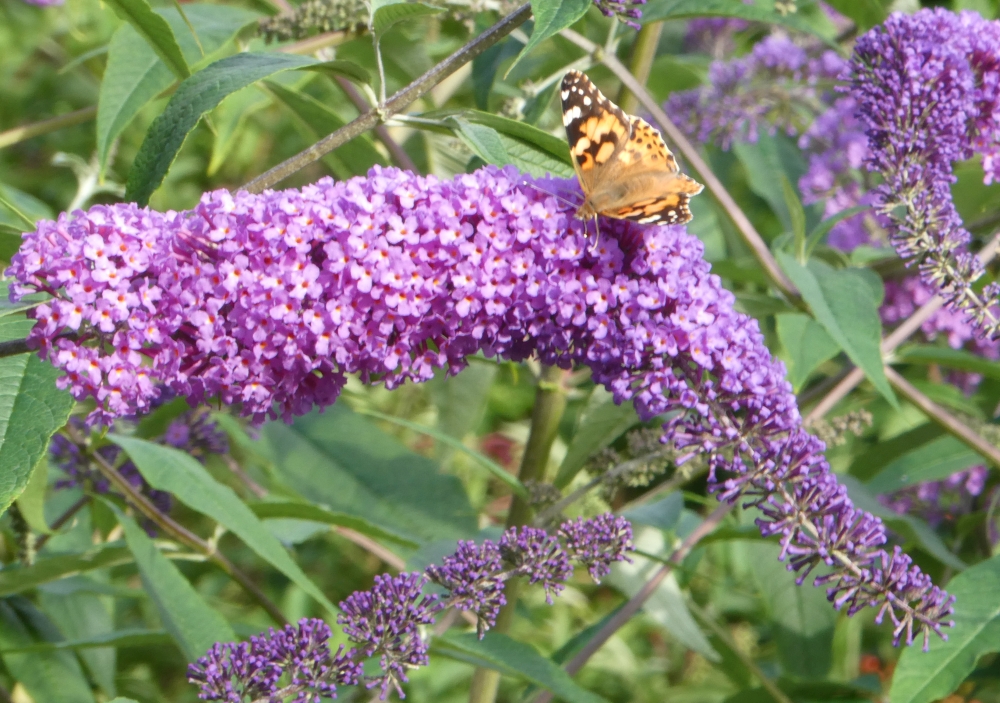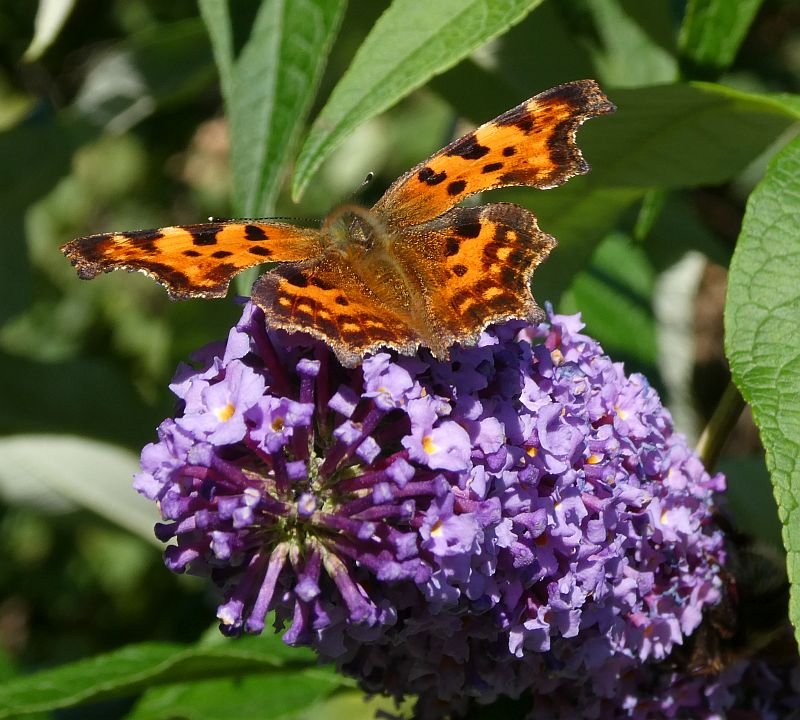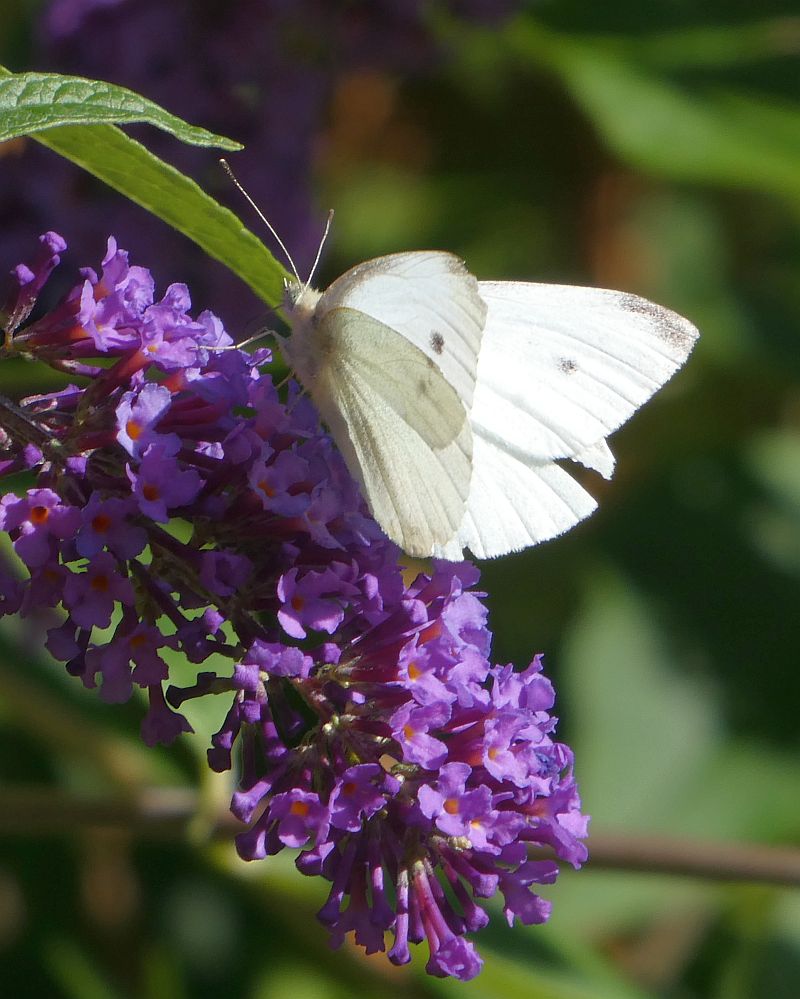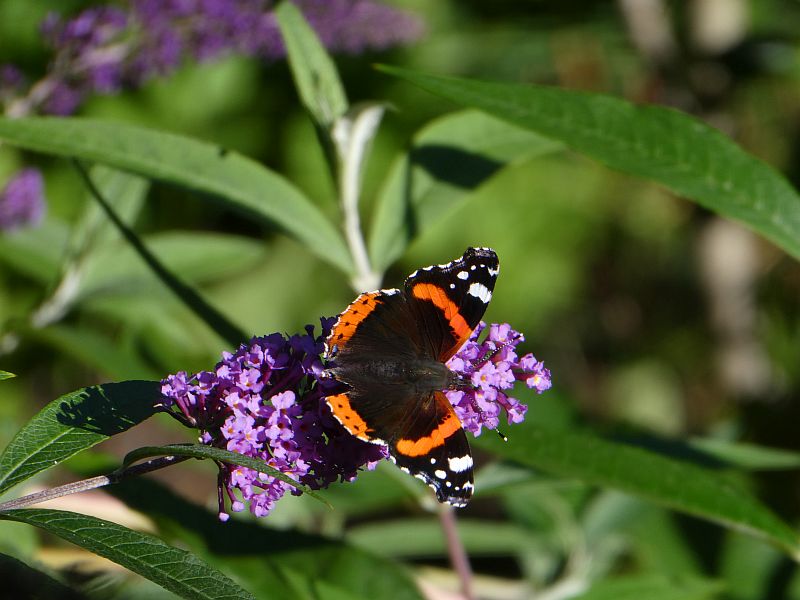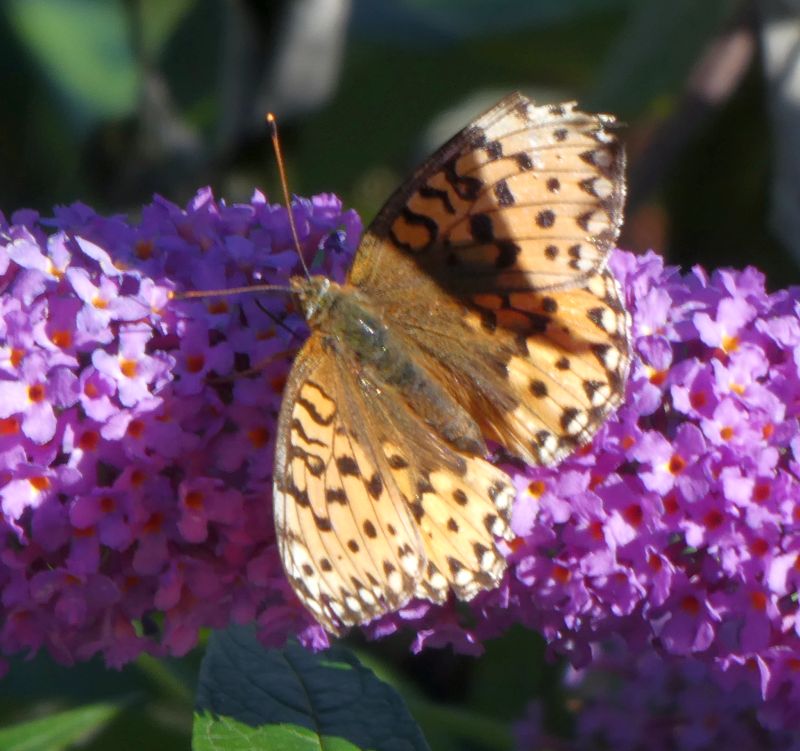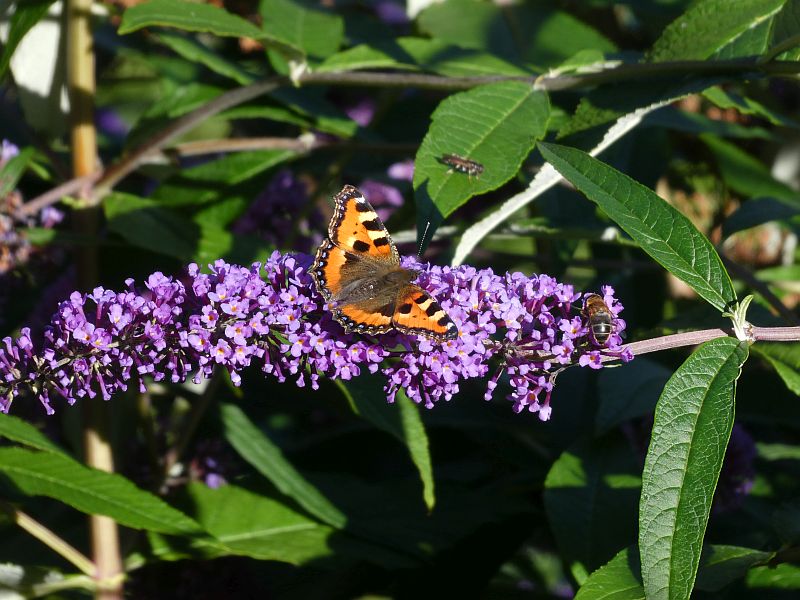Fantastic day at Ringve Botaniske Hagen’s 50th anniversary garden party for the city. The theme for the day was Biodiversity and Sustainability! KVANN had a stand with a focus on perennial food plants that double as ornamental plants, insect-friendly or bird-friendly. We brought with us a number of such edi-ento-mentals and edi-avi-mentals (insect- or bird-friendly, edible ornamental plants) and many toom home plants or seeds! Eventually, all the flowers attracted biodiversity in the form of two admirals and a number of hoverflies!
Thanks to all KVANN members and others who visited and helped us, and especially Jurgen Wegter who helped and brought flower meadow seeds from Fagerli Naturgård!
Thanks also to Vibekke Vange and my colleagues at Ringve!
Pictures by Jurgen Wegter, Stephen Barstow and Meg Anderson!
Tag Archives: red admiral
Largest numbers of red admirals
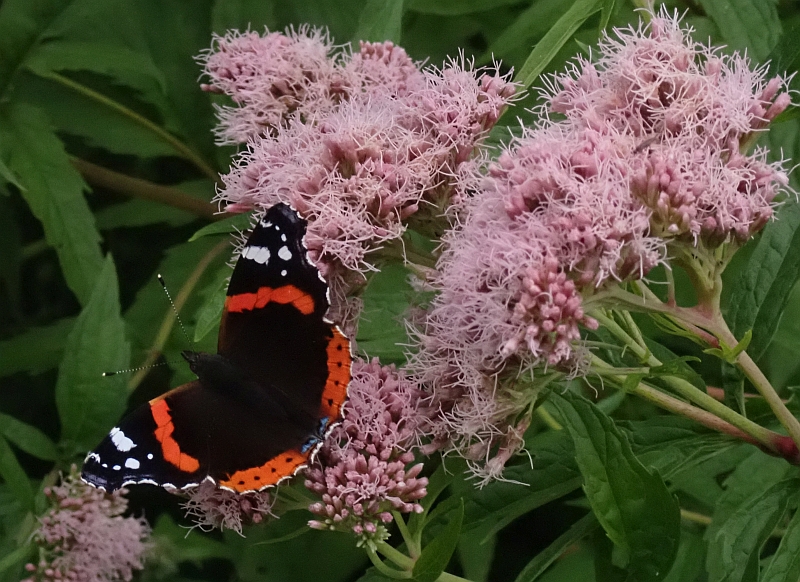 This morning, red admiral butterflies were everywhere in the garden and I counted at least 70 on both Buddleja davidii (butterfly bush / sommerfuglbusk) and Eupatorium cannabinum (hemp agrimony / hjortetrøst) was particularly densely covered!
This morning, red admiral butterflies were everywhere in the garden and I counted at least 70 on both Buddleja davidii (butterfly bush / sommerfuglbusk) and Eupatorium cannabinum (hemp agrimony / hjortetrøst) was particularly densely covered!
This is the second largest number of red admirals recorded in my county Trøndelag ever and the largest count this year in Norway (30 is the second largest)! Sadly, there are few other species around at the moment.
Fleet of Admirals
The numbers of red admiral butterflies have been building up over the last week and today with my large Buddleja davidii in full flower and warm summer weather, I counted at least 15 of the beauties, no doubt second generation butterflies from the influx we had earlier in the summer. I reported this earlier in our national web-based reporting system. To my surprise this was the largest number reported this year not only in the county but in the whole country! It seems to be a poor year for red admirals in the south of the country.
My Buddleja (butterfly bush / sommerfuglbusk) has become large despite cutting it back severely every winter. It was planted here under the balcony so that I could get a good view from above from a self-sowed plant from another bush in the garden in 2010.


Don’t cut those nettles, share them with wildlife
We may know that some of are most spectacular butterflies like red admiral (admiral), painted lady (tistelsommerfugl), comma (hvit C), small tortoiseshell (neslesommerfugl) and peacock (dagpåfugløye) may lay their eggs on nettles (Urtica), but did you know that just here in Norway there are 51 species of moths that do the same and two of the most beautiful were in the garden this morning:
1. The burnished brass / mindre båndmetallfly (Diachrysia stenochrysis)
2. The small magpie / nesleengmott (Anania hortulata)
So, please keep a patch of nettles in the garden all summer (you can still eat the young shoots)…there are also several birds such as bullfinches (dompap) and finches such as brambling (bjørkefink) that eat the seed in winter!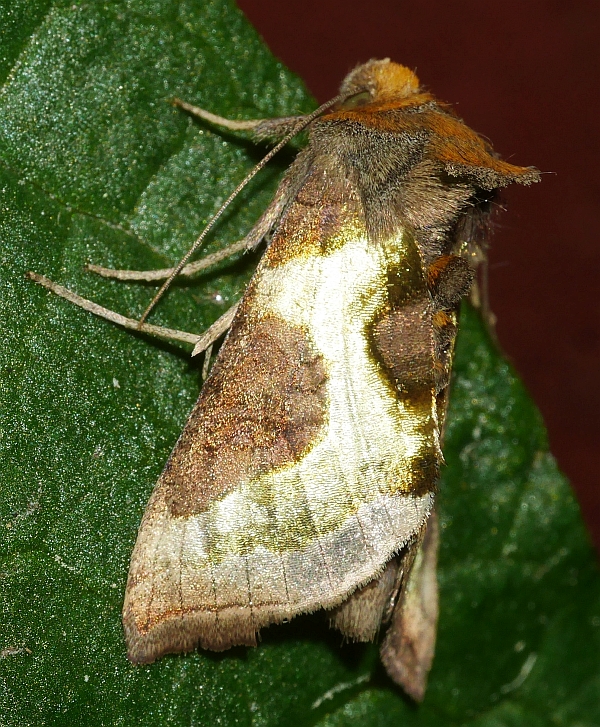

Buddleja davidii
One of the few plants in my garden which isn’t edible is my large Buddleja davidii (butterfly bush / sommerfuglbusk), a wonderful entomental (loved by insects and an ornamental appreciated by Homo sapiens too!). It is strategically placed beneath the balcony so that I can look down from above. As chance has it, I had also planted old man’s beard / tysk klematis (Clematis vitalba) to climb up onto the balcony. The latter is equally popular with late summer pollinators, mainly hoverflies. So this is one of the best spots for watching and photographing the local insect life. However, after coming into flower 2-3 weeks ago there were no butterflies, but a rare 20C day brought them out and both painted lady (tistelsommerfugl; the first since the bumper year two years ago and only the second recorded this summer in Trøndelag county), red admiral (admiral) and comma / hvit C were out yesterday! But it’s at night that the butterfly bush is covered with pollinators, notably an estimated 200 large yellow underwing moths (hagebåndfly)
Admiral on Urtica kiovensis
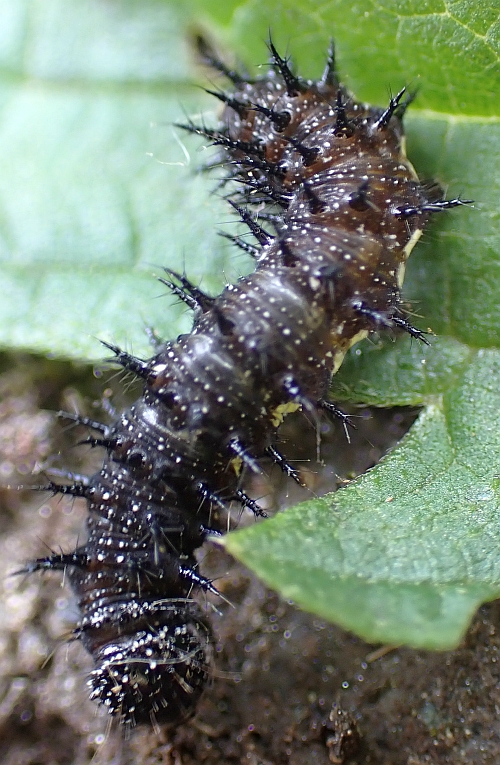
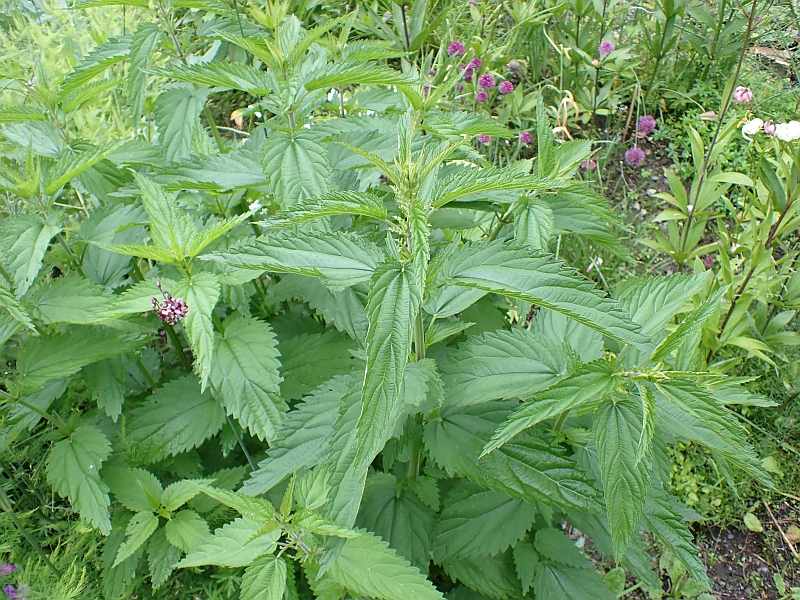
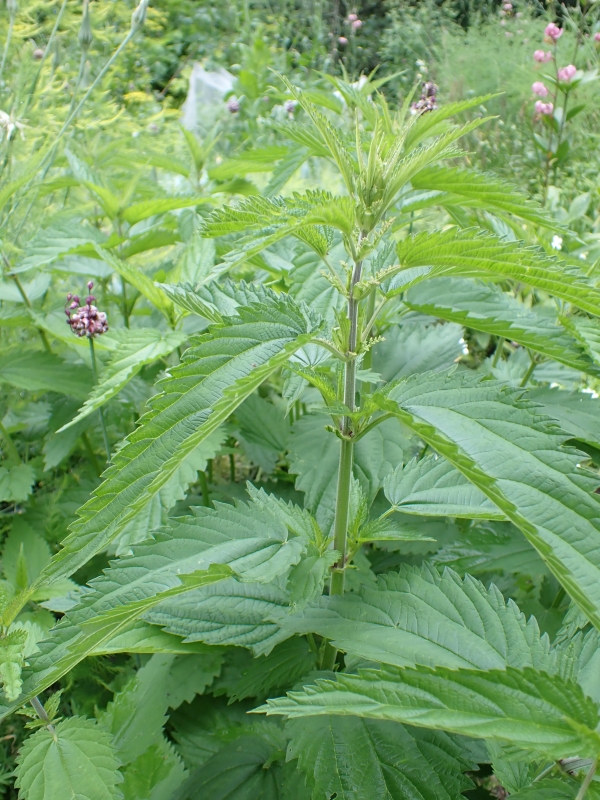
Admirals on Monarda
Monardas are autumn flowering here and one of the best plant genera for pollinating insects at this time of year, including bumble bees and butterflies. Over the last few days with relatively mild weather there have been at least 10 red admiral butterflies in the garden:
Buddleja Butterflies
By chance, the best two plants in the garden for pollinating insects in late summer are growing together in the garden. The Clematis vitalba (old man’s beard / tysk klematis) is in the foreground in the picture below and is popular with hoverflies, droneflies and bumblebees. Behind is my largest (of 3 Buddlejas, butterfly bush /sommerfuglbusk). We had one when we were growing up in the back garden, where my interest in insects and nature started. As the name suggests, it is most popular with butterflies (and moths), but bumble bees are also commonly seen on it. The Clematis reaches up to the balcony which allows me to study the insects at close hand. Clematis vitalba was planted in the garden as the cooked young shoots are commonly eaten in spring in Italy and is therefore one of the best edientomentals (edible/for the insects/ornamental) you can plant. Buddleja davidii is not edible and is in the entomental category.
Although the total number of butterflies is lower this year as last year we experienced a major invasion of painted lady (tistelsommerfugl) butterflies (only 2 observations in the last month in this part of Norway), there is a good diversity of species and you’ll find pictures and videos of the following species below:
Red admiral / admiral (up to 4)
Small tortoiseshell / neslesommerfugl (7)
Dark green fritillary / aglajaperlemorvinge (1)
Brimstone / sitronsommerfugl (colonising this area and my 3rd record this summer)
Comma / hvit C
Small white? / liten kålsommerfugl
Green-veined whites / rapssommerfugl have also been very common this year.
A possible small blue (dvergblåvinge) was also seen in the garden on Allium wallichii on 21st August.
First Admiral
The first red admiral butterfly of 2020 was in the garden yesterday! I bet it’s come a long way!
The last Admiral on Buddleja

